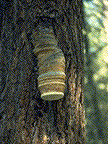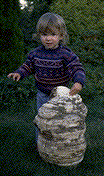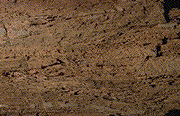Archived Content
Information identified as archived on the Web is for reference, research or recordkeeping purposes. It has not been altered or updated after the date of archiving. Web pages that are archived on the Web are not subject to the Government of Canada Web Standards. As per the Communications Policy of the Government of Canada, you can request alternate formats on the Contact Us page.
Brown Trunk Rot
Fomitopsis officinalis (Villars.:Fr.) Bondartsev & Singer
(= Fomes officinalis (Villars.:Fr.) Faull.)
(=Fomes laricis (Jacq.) Murrill)
Basidiomycotina, Aphyllophorales, Polyporaceae
Hosts: Reported in B.C. on western larch, amabilis and grand fir, Engelmann and Sitka spruce, lodgepole, ponderosa, and western white pine, Douglas-fir, and western hemlock. Elsewhere in North America it has also been found on white and black spruce.
Distribution: This fungus is widely distributed throughout the range of its hosts in B.C.
Identification: The fruiting bodies are perennial and vary from hoof-shaped to long pendulous structures (Figs. 11a, 11b). They vary in size from a few to 40 cm in diameter. The upper surface is zoned, white when fresh but drying to dark grey or light brown in old specimens; a chalky coating, which rubs off as a white powder, may be present. The lower surface is white when fresh, drying to light brown, and is poroid; the pores are relatively small and uniform in outline. The context is white or grey, relatively soft when young, toughening with age, and distinctly bitter in taste.
The early stage of decay appears as a light yellow to red-brown stain or, in the case of Douglas-fir, as a purple discoloration. The stain may extend for a considerable distance beyond the advanced decay. In the late stage the wood breaks into brown cubes and thick (5 mm) white mycelial felts may form in the shrinkage cracks (Fig. 11c).
Microscopic Characteristics: Hyphae in the context of the fruiting body thin-walled, hyaline, with clamp connections. Basidiospores cylindric-ellipsoid to short-cylindric, hyaline, smooth, IKI-, 6-9 x 3-4 µm. Growth in culture very slow, mat white, laccase negative, chlamydospores common, conidia numerous, borne singly on branches, ovoid, 4.5-7.5 x 3-4.5 µm. Stalpers: (10) (11) (12) 13 14 (15) 17 (18) 21 22 (24) (26) 30 (36) (38) 39 42 45 (51) 52 53 54 (75) (80) 83 85 86 90.
Remarks: Fruiting bodies are formed relatively frequently on larch, and are less common on other species. On all hosts a single fruiting body indicates that most of the wood volume has been destroyed. Trees in recreation areas with conks should be considered high hazard, and should be removed. The decay caused by F. officinalis can be confused with other brown cubical rots such as Laetiporus sulphureus, Phaeolus schweinitzii, or Fomitopsis pinicola. Fomitopsis officinalis, however, has thicker mycelial mats and is more common higher on the stem. Another distinguishing feature is the bitter taste of the sporophore context and mycelial mats, a characteristic which has given this fungus the common name "quinine fungus."
References:
Gilbertson, R. L. and L. Ryvarden. 1987. North American Polypores. 2:5277. Fungiflora, Oslo.
Figures
Click on any image to see the full size version.
Press "Back" on your browser to return to this screen.

Figure 11a: Fruiting body of F. officinalis on western larch.
 Figure 11b: Eighty-cm assistant with 50-year-old fruiting body.
Figure 11b: Eighty-cm assistant with 50-year-old fruiting body.
 Figure 11c: Advanced decay in western larch.
Figure 11c: Advanced decay in western larch.
 This Web page has been archived on the Web.
This Web page has been archived on the Web.